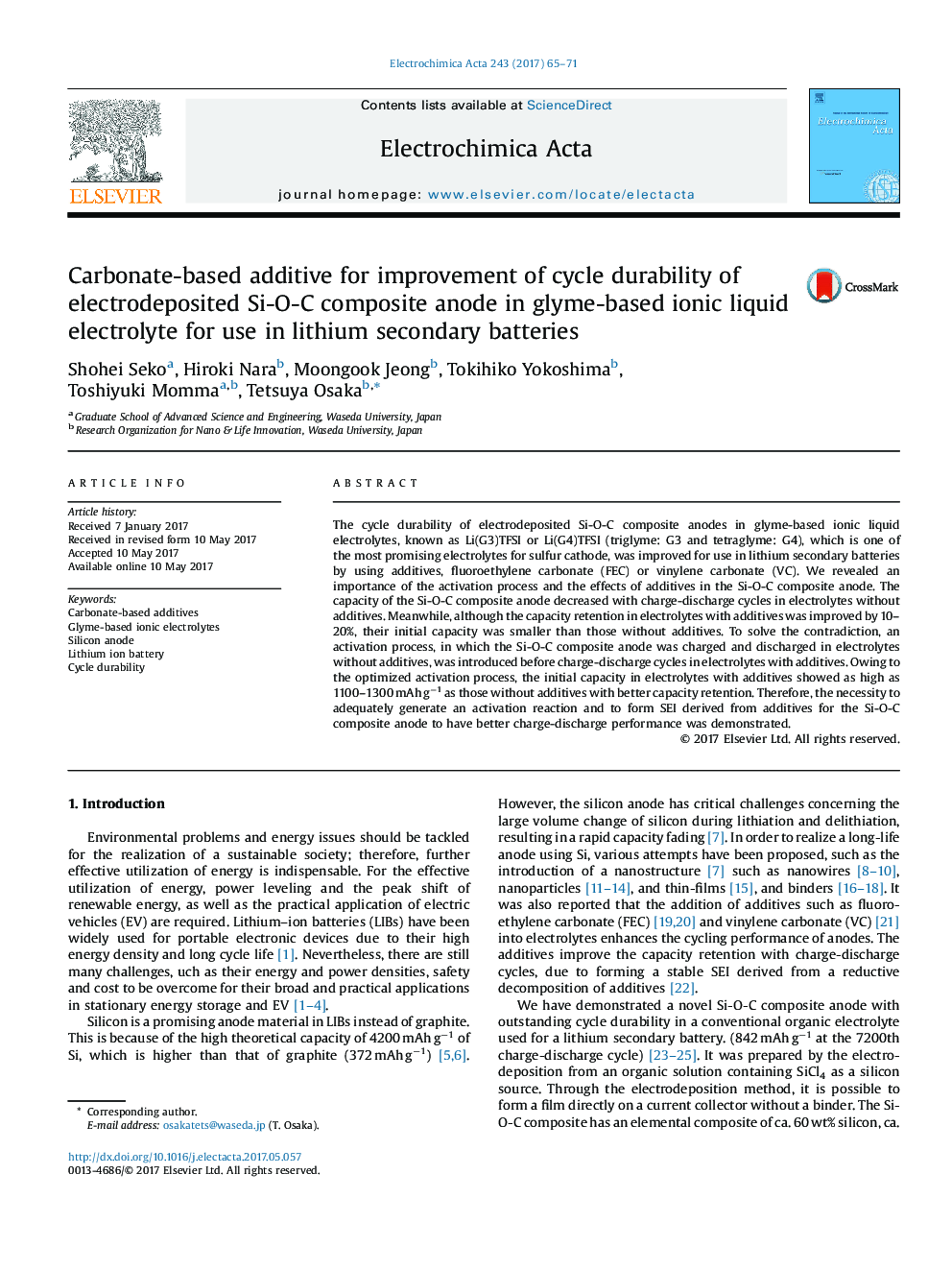| Article ID | Journal | Published Year | Pages | File Type |
|---|---|---|---|---|
| 4766833 | Electrochimica Acta | 2017 | 7 Pages |
Abstract
The cycle durability of electrodeposited Si-O-C composite anodes in glyme-based ionic liquid electrolytes, known as Li(G3)TFSI or Li(G4)TFSI (triglyme: G3 and tetraglyme: G4), which is one of the most promising electrolytes for sulfur cathode, was improved for use in lithium secondary batteries by using additives, fluoroethylene carbonate (FEC) or vinylene carbonate (VC). We revealed an importance of the activation process and the effects of additives in the Si-O-C composite anode. The capacity of the Si-O-C composite anode decreased with charge-discharge cycles in electrolytes without additives. Meanwhile, although the capacity retention in electrolytes with additives was improved by 10-20%, their initial capacity was smaller than those without additives. To solve the contradiction, an activation process, in which the Si-O-C composite anode was charged and discharged in electrolytes without additives, was introduced before charge-discharge cycles in electrolytes with additives. Owing to the optimized activation process, the initial capacity in electrolytes with additives showed as high as 1100-1300 mAh gâ1 as those without additives with better capacity retention. Therefore, the necessity to adequately generate an activation reaction and to form SEI derived from additives for the Si-O-C composite anode to have better charge-discharge performance was demonstrated.
Related Topics
Physical Sciences and Engineering
Chemical Engineering
Chemical Engineering (General)
Authors
Shohei Seko, Hiroki Nara, Moongook Jeong, Tokihiko Yokoshima, Toshiyuki Momma, Tetsuya Osaka,
